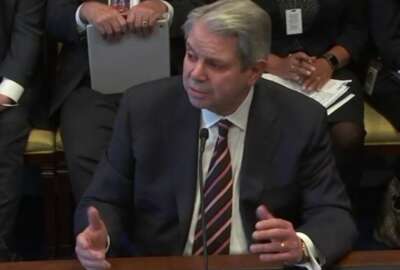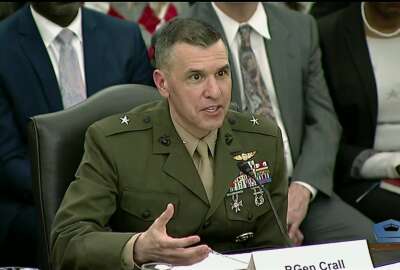
Feds: Do you work for love or money?
The federal employment question forms a knot that remains difficult to untie.
You could sense an uncomfortable stirring among those seated in the crowded conference room. The question came from Terry Gerton, president of the National Academy of Public Administration. The occasion was a slightly odd one-year celebration of the Trump administration’s federal management agenda Wednesday.
The question: What will be the next activities in the PMA over the next five years?
Love him or hate him, I think it’s safe to say President Donald Trump certainly arouses emotions. The non-political crowd of reporters, contractors and assorted federal thinkers are all trained to keep their personal politics on ice during these types of events. But still, it was a bit amusing the way the question floated across the room. The 2020 election is already devolving into a cage fight.
Gerton addressed her question to Office of Management and Budget Deputy Director Margaret Weichert, General Services Administration chief Emily Murphy, and Federal Chief Information Officer Suzette Kent. They all made recitations of the elements on the PMA dutifully but also enthusiastically. Truth is, the ideas, far from radical, build on efforts of the previous several administrations — modernizing IT, buying it more effectively, revving up the workforce, improving service to the citizens.
Later in the program, Dave Mader, a former career financial guy now with Deloitte, called the decades of management work a relay race. I thought that was a good analogy. The constellation of contractors, consultants and think-tankers that actually do much of the work and supply much of the brainpower come from administrations of both parties. As in a never-ending pickup softball game, everyone is familiar with everyone. So maybe the five-year question wasn’t farfetched or presumptuous.
Related Stories

GAO growing cyber staff even if Congress doesn’t revive tech assessment office
Weichert, dual hatted as acting Office of Personnel Management chief, was metaphorically pounding the table about the need to realign performance, pay, recognition and skills. She was emphatic that while you’ve got to pay people for work, salary levels are not the primary drivers of job or career satisfaction. She promised a major study would launch — I guess from her OPM hat — on this topic.
It’s true that people don’t work for money alone, but it’s only partly true. As Tevye said, there’s no shame in being poor but it’s not a particular honor either. And at some point, and especially in the IT field and its subcategory of cybersecurity, the maxim fails.
I was speaking with a large-agency deputy CIO the other day. She said that when it comes to cyber staff, the beckoning of private sector salaries persists like an ever louder drumbeat. Eventually people dance out of government, despite the siren song of the mission.
Several CIO shops are trying out swapping employees so, for instance, cyber people can learn about the mission and operations behind legacy systems. And legacy systems operators can work in the security operations center and learn there.
Weichert is correct that recognition, training opportunities, job mobility all count in people’s perception of their careers. Good employers worry about those factors.
Still, federal employees might be a little wary of these “reskilling” and other outreach efforts. This is the same administration that wants to raise employee contributions to the Federal Employees Retirement System, to make annuities based on last five years rather than three, to freeze pay when it can, and to shorten probation and streamline firing under Title 5.
It’s also pushing the idea of expanding the roster of term employees, precisely for the kinds of highly specific tasks like cybersecurity or IT modernization. Many people are rightly skeptical of the “gig” employment model. Just ask the gigging people at Facebook, Apple or Amazon. Better to work for a contractor.
On the other hand, the administration has taken the relay baton from the Obama administration on U.S. Digital Service and of the 18F group at GSA.
The reality is, no system of employment can outlast large, permanent shifts in the economy. On the private side almost no one has defined benefit pension plans. Most professionals are employees at will. In the year Congress and an administration debate moving one bureau from this department to that, in the private economy there will be 10,000 mergers, acquisitions, closures, realignments and transfers.
Maybe it’s not in the cards to have all of the benefits of the traditional federal system and the salary dynamics of Silicon Valley?
Copyright © 2025 Federal News Network. All rights reserved. This website is not intended for users located within the European Economic Area.
Tom Temin is host of the Federal Drive and has been providing insight on federal technology and management issues for more than 30 years.
Follow @tteminWFED





